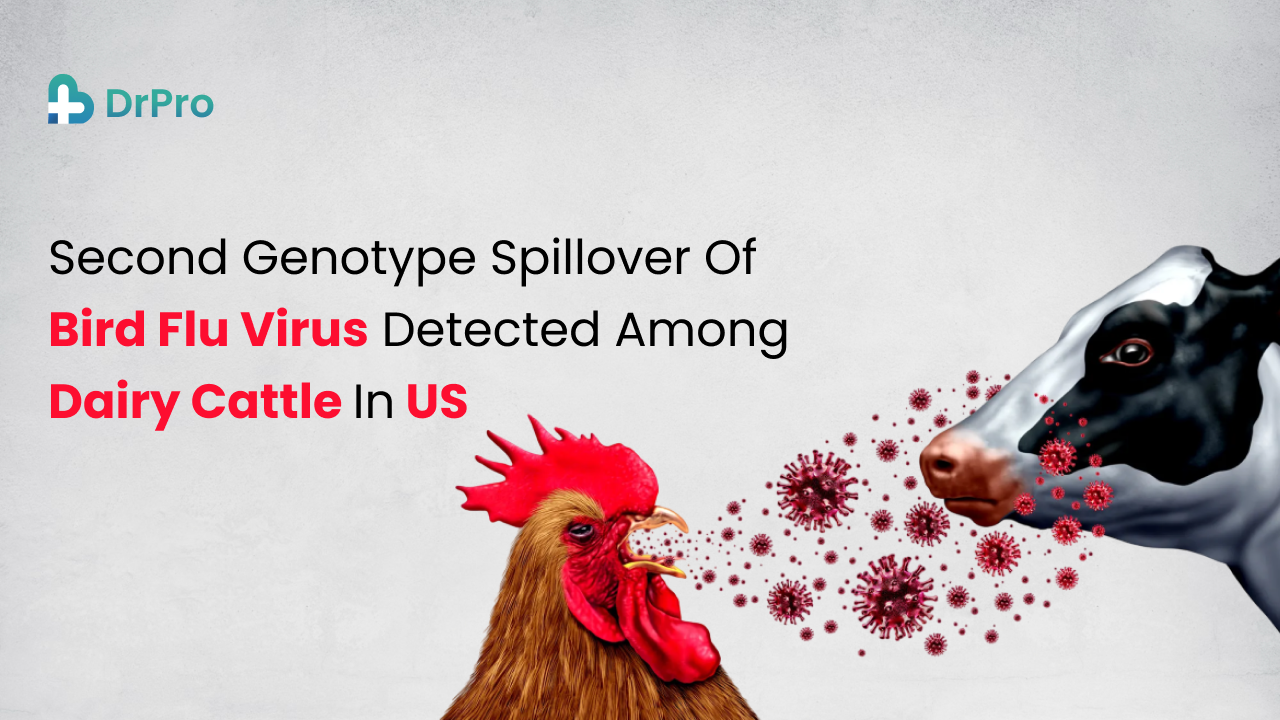A new type of Bird Flu Virus emerged in dairy cattle in the United States. This marks the second time a version of the virus appeared in cows. The first one was B3.13, and now the second one is D1.1. This new type was discovered by the U.S. Department of Agriculture by testing milk from sick cows in Nevada.
Bird Flu Virus in Dairy Cattle: What We Know
The Bird Flu Virus is also known as avian flu. It primarily affects birds but nowadays has been increasing in the cases of Bird Flu Virus in dairy cattle. The first reports were found at the end of 2023 and since then, the cases have emerged in different states. Here farmers and experts are working together to figure out how the virus spreads and how it affects milk production.
New D1.1 Type in Dairy Cattle
The discovery of the D1.1 type raises concerns about how the bird flu is changing in dairy cattle. According to scientists, the virus seems to be evolving to infect other animals. USDA is conducting some tests to establish how this type spreads and its implications for cattle and milk.
Symptoms of Bird Flu Virus in Dairy Cattle
The Farmers have observed the following symptoms in cows infected with bird flu:

- Producing less milk
- Fever
- Eating less
- Trouble breathing
Veterinarians call on the farmers to closely watch their cows and report anything abnormal so as not to spread the virus further.
How Bird Flu in Dairy Cattle Spreads
Experts believe that bird flu in dairy cattle is spread when the cows are exposed to infected birds or contaminated material. It may also be spread through farm workers or equipment that moves between farms. The authorities are tracking cases to try to control the virus.
Can Bird Flu Virus in Dairy Cattle Affect Humans?

As of now, there is no robust evidence that Bird Flu Virus in dairy cattle is transferred to humans. However, health professionals are observing the situation closely. The USDA and CDC caution against handling ill cows with much care. Also, pasteurization kills viruses in milk; hence, milk is safe to consume.
New virus update: Human Metapneumovirus (HMPV): Symptoms & Treatment
Prevention of Bird Flu in Dairy Cattle
Farmers can help prevent the spread of Bird Flu Virus in dairy cattle by
- Keep cows away from wild birds
- Clean equipment often
- Monitor cows for signs
- Report sick cows to veterinarians
Conclusion
The discovery of a second type of Bird Flu Virus in dairy cattle is a cause for concern, but work is done to understand and control its spread. Farmers, vets, and health officials need to work together to protect cattle and public health. Get more updates with Wellness DrPro Health.
Frequently Asked Quetions
Q1. What are the signs of bird flu in dairy cattle?
Bird Flu Virus in dairy cattle can cause fever, reduced eating, respiratory difficulties, and lower milk production.
Q2. Do cattle dairy have the bird flu from people?
There is no strong evidence that the bird flu in dairy cattle transmits to humans, but experts cautionary notes apply.
Q3. How do dairy cattle acquire Bird Flu Virus?
The virus is transmitted by contact with infected birds, contaminated machinery, and workers moving between locations.
Q4. Are milk from infected cows safe to drink?
Yes, it kills the viruses; therefore, pasteurization makes milk safe for consumption.
Q5. How can farmers protect their cows from bird flu?
Farmers should keep cows away from wild birds, clean equipment, and watch for signs of illness.

